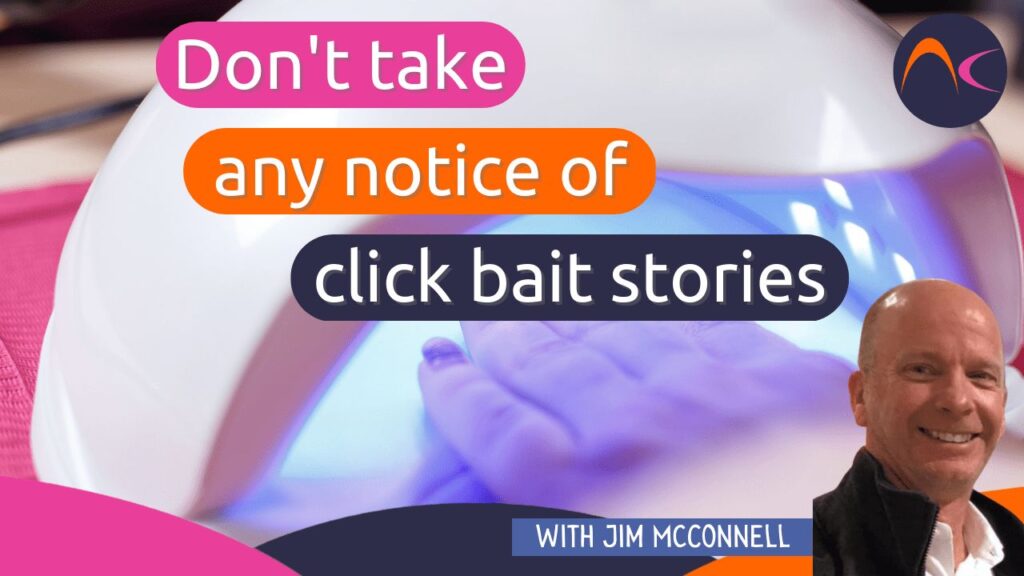Paper to generate fear in the public
The report from UCSD researchers Zhivagui et. al. published January 17, 2023 tries to accomplish a lot in one report, but it falls short. Reading the report a few times reveals statements that the authors want to create a study that supports their own beliefs that nail curing lights are dangerous. This is not solid, proper, or even decent science. This is a paper to generate fear in the public and directly attacks our industry. It is my impression they feel there is little to no science behind the chemistry and curing technology is used in gel nail products. Let me illuminate my points with a few remarks:
Original Article – Nature Communications
Yahoo Life Article
Dail Mail – Online News Paper Article
1. The researchers did not provide sufficient controls and details regarding testing on actual skin and not on cloned skin cells in a petri dish (with all dermal layers to be included in the exposure to the energy source). The outer layers of the skin provide protection for the inner, subdermal layers which are more at risk of forming cancer.
2. The time of exposure to the energy source is extreme at 20 minutes per exposure compared to the salon exposure times of 30-60 seconds per exposure.
a. In the salon: 3-5 exposures totaling the exposure time to 1.5 to 5 minutes.
b. On the study: 2 or 3 exposures totaling 40-60 minutes.
3. The number of 20-minute exposures in a short time frame – 2 exposures in 3 hours or in a different portion of the study, (3) 20-minute exposures over a 3-day period. This would never be done in a salon.
4. There is no control for the effect of heat from the curing light on the cells in the test.
5. There is no detailed spectrograph of the curing light irradiance ranging from 280nm to 400nm. The proper evaluation of the irradiance from the curing light is essential for evaluating the amount of energy that was emitted from 280nm to 400nm.
a. A UV testing unit that was probably purchased on Amazon for $153 was used.
6. The calculation of energy exposure (pg 9, under “Methods”) assumes that all energy is created equal for its effect on tissue – from 280nm to 400nm. This is certainly NOT the case based on other portions of their study as listed in the report wherein it is notated that UVC and UVB have differing mutagenic effects on the cells.
7. The authors state in their own report that there is insufficient time between exposures to allow the cells to recover from the exposure. Here they are admitting that the study that they designed and conducted is poorly done. Page 9, under “Methods/Cell viability and cytotoxicity assays” the author summarizes (I am paraphrasing) in the paragraph that they chose the worst-case scenario to demonstrate the greatest effect of the UV energy source on the skin cells tested. In short – they admit to creating the worst outcome possible.
8. It is stated in both the report and the article that “future large-scale epidemiological studies are warranted” meaning that these results are generally inconclusive and require more study. It is also stated that it will take “at least a decade to complete” these tests – so 10+ years of work to verify what we already observe in the salon. If their future research is conducted as well as this initial study, they have already formed their opinion and will design further testing to support their unfounded beliefs. Proper research technique is to approach a topic from a neutral stance, designing the experiments to obtain factual and viable data and then objectively analyzing the results to form a conclusion.
In Summary
This report was designed, conducted, and written to support their ideas that nail curing lights are dangerous. In the 23 years that I have been making, testing, and improving gel nail systems, I have never heard of one client or nail technician who has developed skin cancer on their fingers that is a direct result of the curing lights. Moreover, I have not heard of anyone developing skin cancer on their fingers in the 23 years that I have been in this industry. That is not saying that it could not happen, I just have never heard about it nor seen it. If this is the best work that can come out of this lab at UCSD, it is shameful. I have seen more impressively designed experiments from college underclass students than from these post graduate PhD researchers.


